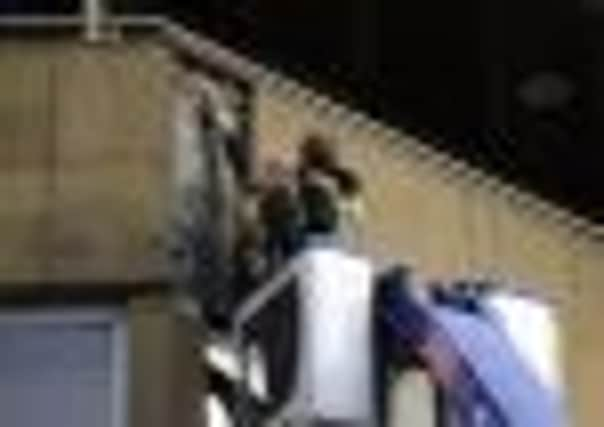Princes St masonry fall sparks call for regular tests on city buildings


An investigation is under way after two cladding panels fell from the roof of the Next store, crashing on to the pavement 30 feet below.
It happened less than half a mile from where a 26-year-old waitress was killed 12 years ago in a similar fall outside Ryan’s Bar in Queensferry Street.
Advertisement
Hide AdAdvertisement
Hide AdAs a result, the shopping thoroughfare was closed between South Charlotte Street and Frederick Street for around two hours.


Fortunately, no shoppers or commuters were injured following yesterday’s 6.30am incident. Protective scaffolding has since been put in place to ensure public safety.
However, the drama has renewed calls for a more stringent inspection service in the city in which building owners would be required to have their premises pass a compulsory MOT each year.
Euan Leitch, assistant director of city heritage body the Cockburn Association, believes that such a service is needed given that, as it currently stands, the repair and upkeep of the city’s buildings is solely the responsibility of owners.
Advertisement
Hide AdAdvertisement
Hide AdHe said: “This latest incident really highlights how either local authorities or the government needs to give consideration to a statutory MOT scheme.
“I believe that Edinburgh, which has such a rich stock of architectural heritage, should be taking the lead on this. Such a scheme would also create jobs and work in the construction sector through any required building maintenance.”
This view was echoed by Built Environment Forum Scotland chair Cliff Hague, who said: “It makes economic sense to keep older buildings in a good state of repair – investment in regular maintenance saves on larger-scale repair later. It supports local jobs and helps carbon reduction.”
Concerns have long been raised about the state of stonework on city buildings following the death of Australian waitress Christine Foster in 2000.
Advertisement
Hide AdAdvertisement
Hide AdIn 2002, her father, Michael, then 59, told an accident inquiry he wanted to see tougher checks.
Since then there have been several other masonry falls in the city and in 2006 organisers of the Hogmanay Street Party were forced to cancel the event after high winds blew roof tiles off buildings in the city centre.
The problem was further highlighted this week by the Culture Minister Fiona Hyslop, who called on people to take a more active role in safeguarding the nation’s built heritage, after figures showed that the majority of pre-1919 traditional properties are in need of urgent repair.
Ms Hyslop announced that Historic Scotland is to pilot a Traditional Building Healthcheck scheme, which will help owners identify problems and suggest how they can best be tackled.
Advertisement
Hide AdAdvertisement
Hide AdShe said: “The evidence produced by Historic Scotland is unequivocal.
“These are good buildings, some of which have been poorly maintained, and their declining condition is a cause for serious concern.”
EDINBURGH BUILDINGS - YOUR RIGHTS AND RESPONSIBILITIES
THE repair and maintenance of private properties is the responsibility of the owners, who should maintain them to ensure the building does not become a danger to the public and have adequate building insurance in place.
At present, in the wake of the statutory repair scandal which related to shared private properties, the council is in the process of replacing the Property Conservation Service with a new service supporting homeowners to carry out their own repairs.
Advertisement
Hide AdAdvertisement
Hide AdIn the meantime, the service is only carrying out emergency work, serving stat notices and ordering repairs only where there is a risk to public safety or public health.
Ordered emergency work includes a risk of falling stones or slates; a risk of the building collapsing; blocked or defective sewage systems; water leaks, fires or explosions. The costs of any work will then be charged to all owners within the building.